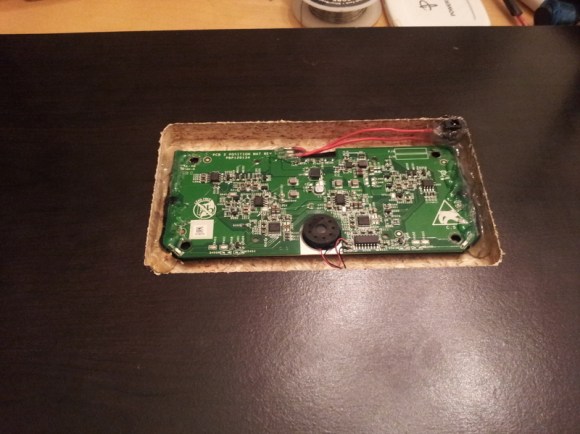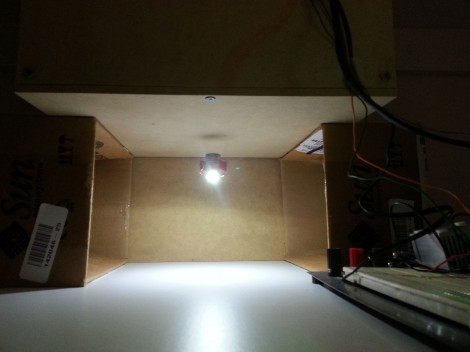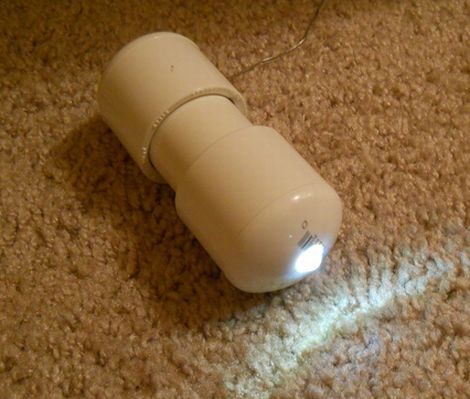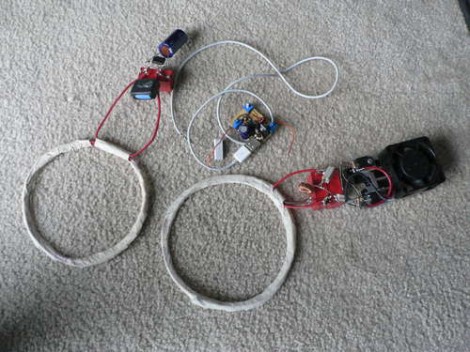
Lights on the tree? Check. Presents under the tree? Check. Lights in the presents? Why not! If your gifts don’t look festive enough and you have a spare inductive charging system lying around the house—though, you could always build your own from scratch—you can brighten things up by installing a few LEDs in the packaging.
The Instructable takes advantage of those new-fangled LED Christmas lights, one strand of which typically draws under 1A and requires around 5V, putting it in the ballpark for popular induction systems used to charge cell phones such as the Powermat. In this particular example, the strand ran off 3 AA batteries, or 4.5V, which meant stepping down the voltage either with a power regulator or, more conveniently, a simple diode in series.
Some additional modifications to the packaging tidy up the installation, including carving out some of the cardboard to recess the receiver and securing everything with hot glue before wrapping it all in paper. You can see a quick demonstration video below.
















